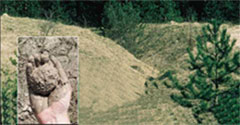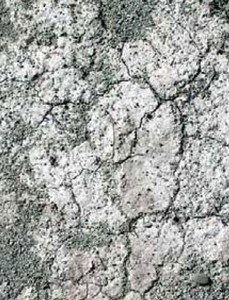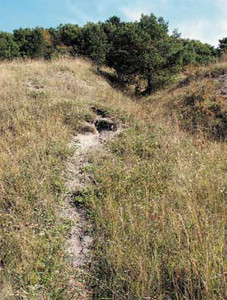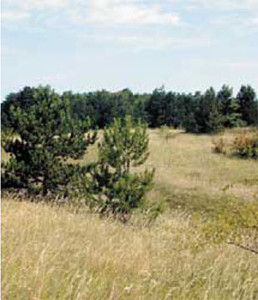The ground of the Aarnescht

Characteristics of a clay ground
During arid periods it is heavily cracked and after rain showers it can easily been worked with the hands
The underground of the Aarnescht, composed by compact marl sediments, brakes easily into pieces and engendered marls made of clay and limestone. This kind of soil, called “Gritt” is characteristic for:
- its poorness of nutrients
- the very low concentration of top soil (humus)
- its aridness
- its great capacity of heat strorage
High clay concentration

“Gritt” — the predominant kind of ground on the Aarnescht
The high concentration of clay engenders a strong earth cracking during dry summers. After a rain shower the grounds quickly swell, so that the cracks disappear, forcing the waters to flow off, foreclosed to infiltrate the soil. The young seedlings are unable to grow on such a surface and the plants need a long time to cover the ground.
“Griechten”

Erosion cracks
The semi-arid grasslands show important erosion cracks. During heavy rain showers the water is flowing off by the little fissures, which came up during dry periods. The top soil is constantly carried off and over the years the small fissures become large cracks with steep slopes called “Griechten”.
A special climate

The warm and arid climate, the plants’ fragrance and the insects’ buzzing confers a nearly Mediterranean climate to the Aarnescht.
The Aarnescht has a typical warm and arid climate, influencing the complexion of the surrounding landscape during the seasons. The incident solar radiation on the south and south west slopes heats up and desiccates the ground in summertime, and in spring the snow melts more quickly there as elsewhere.
